


Blood clots in the lungs, primarily leading to pulmonary embolism, can be daunting. It’s important to know that there are effective treatments available, including:
In more severe cases, surgical interventions may be necessary. Timely diagnosis is crucial, especially for those at high risk. Personalized treatment plans can significantly improve health outcomes and provide the necessary support for managing this potentially life-threatening condition.
We understand that facing such health concerns can be overwhelming. It’s natural to feel anxious about what lies ahead. However, by seeking timely care and working closely with healthcare professionals, you can take proactive steps towards better health. Remember, you are not alone in this journey; there are compassionate experts ready to help you navigate through these challenges.
If you or a loved one are experiencing symptoms or have concerns about pulmonary embolism, please reach out for support. It’s never too late to seek help, and together, we can work towards a healthier future.
Understanding the complexities of blood clots in the lungs is crucial for maintaining respiratory health. These obstructions can lead to serious conditions like pulmonary embolism, which can be life-threatening. This guide gently explores the causes, symptoms, diagnostic procedures, and treatment options available for managing this significant health issue.
How can individuals recognize the signs of lung blood clots? What steps can they take to navigate the many treatment options available to ensure their well-being? By exploring these questions, we can empower ourselves and our loved ones to take proactive steps in safeguarding our health.
Thrombi, or solid masses, are formed from elements within our circulation, mainly platelets and fibrin. In the respiratory system, these obstructions can lead to a serious condition known as pulmonary embolism (PE), necessitating blood clots in lungs treatment. This occurs when a blockage travels to the pulmonary arteries, impeding circulation and potentially reducing the oxygen supply to your body. It is crucial to understand that this can be life-threatening.
For older adults, the implications of coagulation in respiratory health can be particularly concerning. Age-related changes in heart health may lead to unique complications. It's important to recognize these risks and seek proper management. Timely intervention can significantly enhance outcomes for those affected by blood clots in lungs treatment.
If you or a loved one are experiencing concerns about respiratory health, please don't hesitate to reach out for support. Understanding your health and is a vital step towards maintaining well-being. Remember, you are not alone in this journey, and compassionate care is available to guide you through.
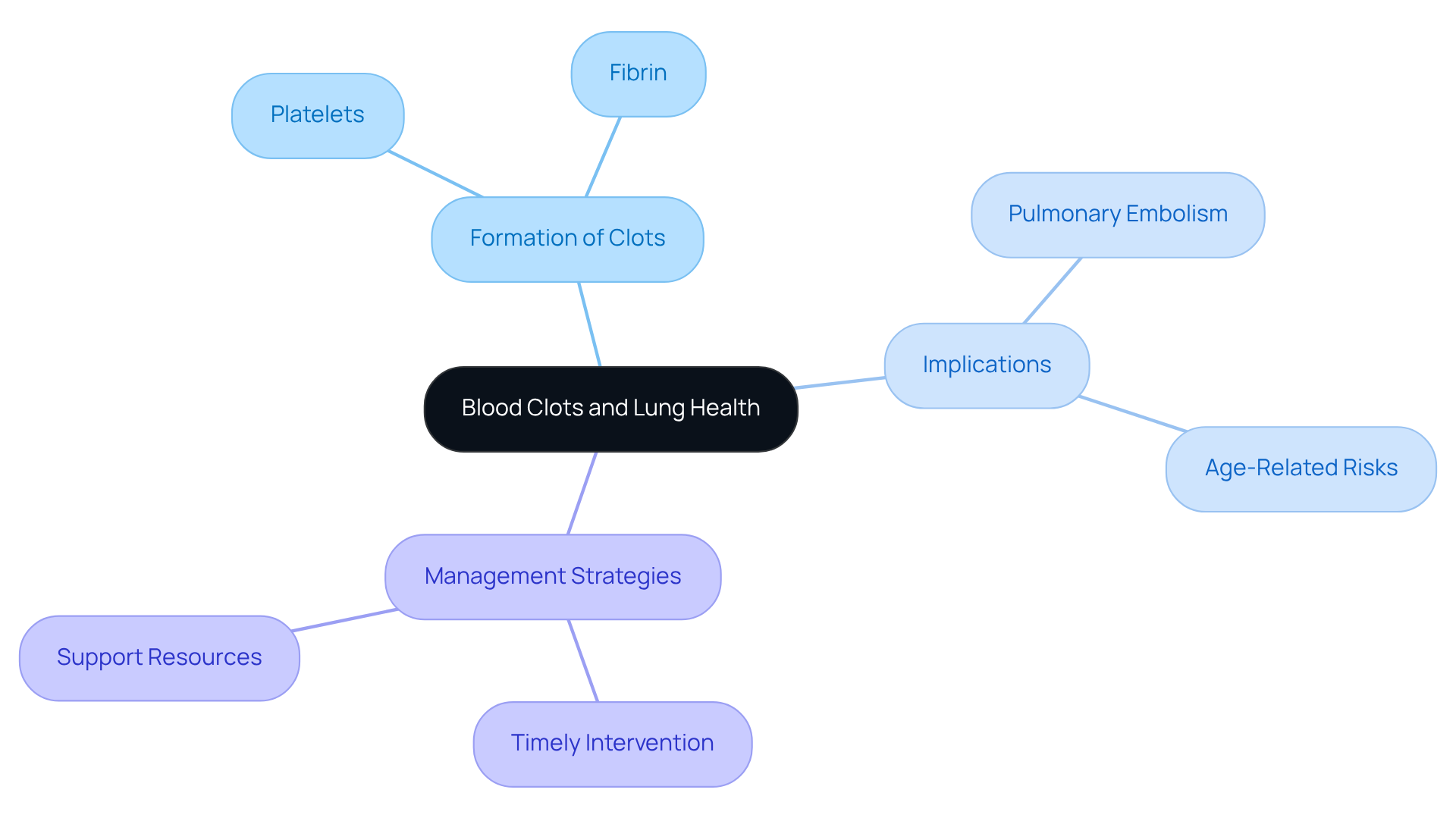
Blood blockages in the lungs can arise from various factors, and it's important to understand what contributes to this condition. Prolonged immobility, such as during long flights or extended bed rest, is a common cause. Certain medical conditions, including heart disease, cancer, or obesity, can also play a significant role. Additionally, some individuals may have genetic predispositions to clotting disorders. Age is another critical risk factor; seniors often face multiple health challenges that increase their likelihood of developing clots.
At Amavita Heart and Vascular Health, we recognize these risks and are here to help. We offer advanced imaging capabilities and thorough assessments tailored specifically for individuals at high risk, including the elderly. By understanding these factors, we can enhance risk evaluation and management strategies, particularly for older adults who may benefit from personalized interventions to effectively address their cardiovascular health.
If you have concerns about your heart and vascular health, please don’t hesitate to reach out. Our is dedicated to providing the support and care you deserve, ensuring that you feel comfortable and informed every step of the way.
Signs of pulmonary embolism can vary, but they often include:
For elderly patients, these symptoms might be confused with other conditions like pneumonia or heart failure, making it essential to stay aware. It’s crucial for caregivers and family members to be attentive and seek medical help if these symptoms occur, as early detection can greatly improve treatment outcomes.
At Amavita, Dr. Martinez-Clark specializes in treatments designed to enhance breathing and energy levels. Many patients find that they can even go home the same day after receiving care. Remember, you are not alone in this journey; to help you through these challenging times.
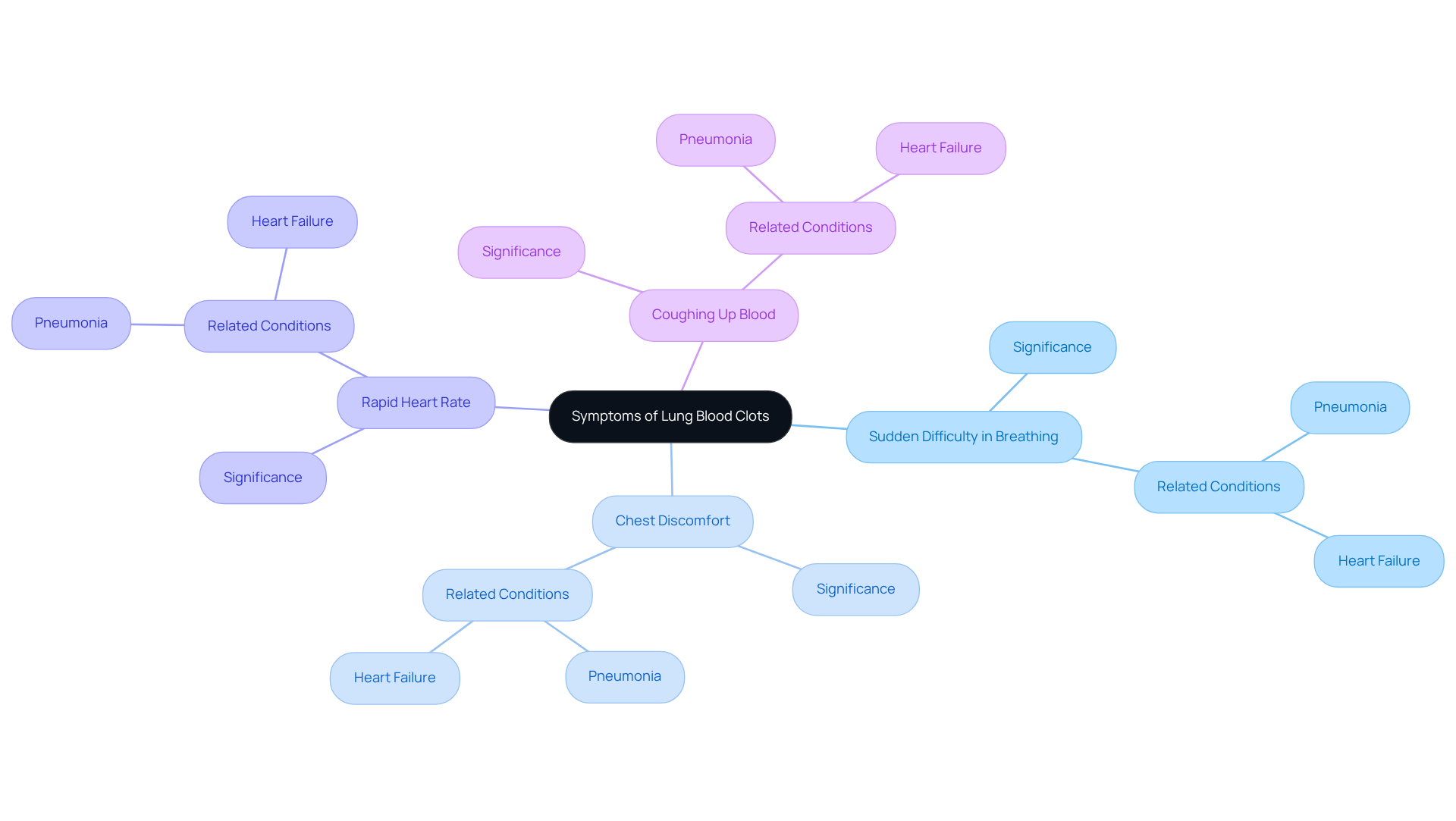
Identifying blockages in the respiratory system can understandably cause concern. Typically, this process involves a thoughtful combination of:
Among the common diagnostic methods is a CT pulmonary angiography, which provides detailed images of the vessels within your respiratory system. Additionally, a D-dimer test helps to assess clot decomposition products, offering further insights into your condition.
In certain cases, a ventilation-perfusion (V/Q) scan may also be utilized to evaluate circulation in the respiratory system. Understanding these procedures can help ease your worries, allowing you to feel more informed and supported throughout your . Remember, you're not alone in this; we are here to guide you every step of the way.
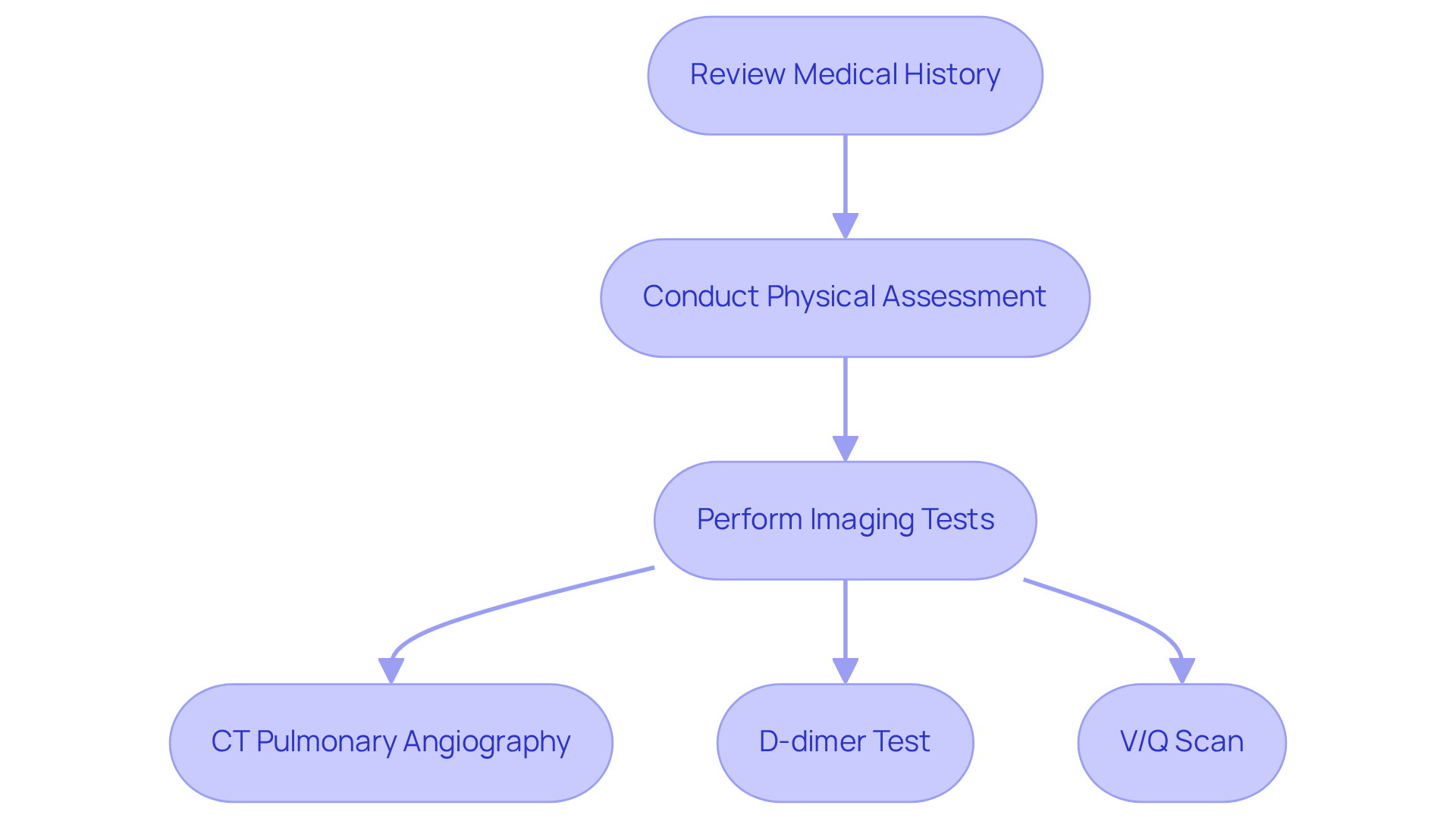
Managing blood clots in lungs treatment can be a concerning experience for many individuals. At Amavita Heart and Vascular Health, we understand these worries and are here to help. Our blood clots in lungs treatment primarily involves anticoagulant drugs, which not only help prevent further blockages but also assist the body in breaking down existing ones. We utilize advanced diagnostic imaging and comprehensive evaluations to tailor each treatment plan to the unique needs of those we serve, especially those who may be at higher risk.
In more serious cases, we may recommend thrombolytic treatment as a part of blood clots in lungs treatment to quickly dissolve blockages. For individuals who experience recurring blockages or are unable to use anticoagulants, blood clots in lungs treatment options like embolectomy or the insertion of a vena cava filter can be considered. We take pride in our creative, , ensuring that every treatment plan reflects the individual’s overall health, age, and specific risk factors.
Our goal is to provide same-day convenience while focusing on restoring your quality of life. Remember, you are not alone in this journey. We are committed to supporting you every step of the way, and we encourage you to reach out for assistance and guidance tailored to your needs.
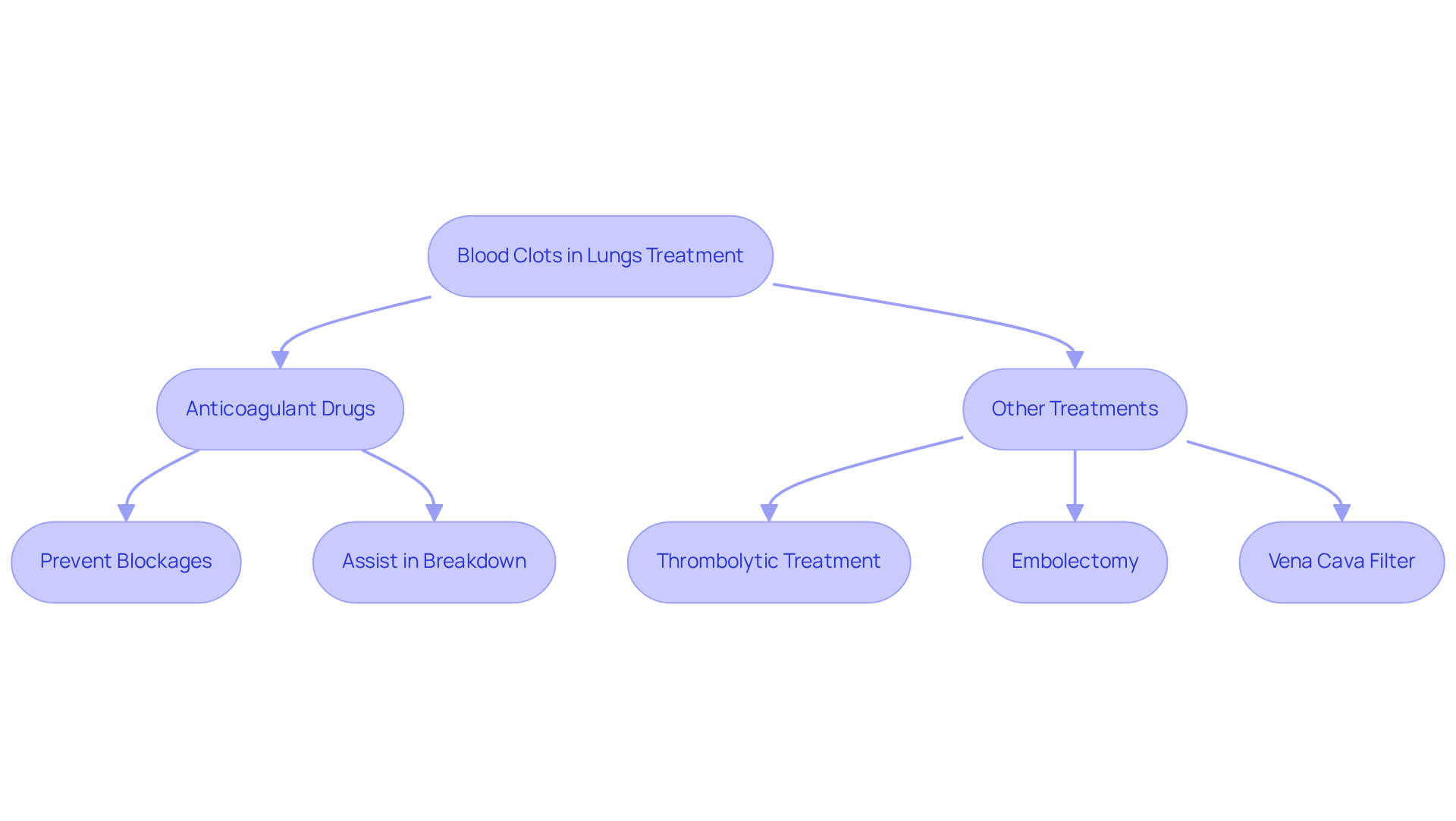
Preventing blood clots in lungs treatment is a vital concern, especially for those who may be at greater risk. Staying active, maintaining a healthy weight, and avoiding prolonged periods of immobility are essential steps to take. Have you considered how these lifestyle choices can impact your health?
For individuals undergoing surgery or those with specific medical conditions, healthcare providers may recommend prophylactic anticoagulation therapy as part of the blood clots in lungs treatment to further safeguard against clots. In addition to this, wearing compression stockings can significantly improve blood flow in the legs, offering another layer of protection.
It's important to educate patients and their families about these preventive measures. Understanding these strategies can empower you and your loved ones to take proactive steps towards . Remember, you are not alone in this journey; support is available, and reaching out for help is a strong and positive step forward.
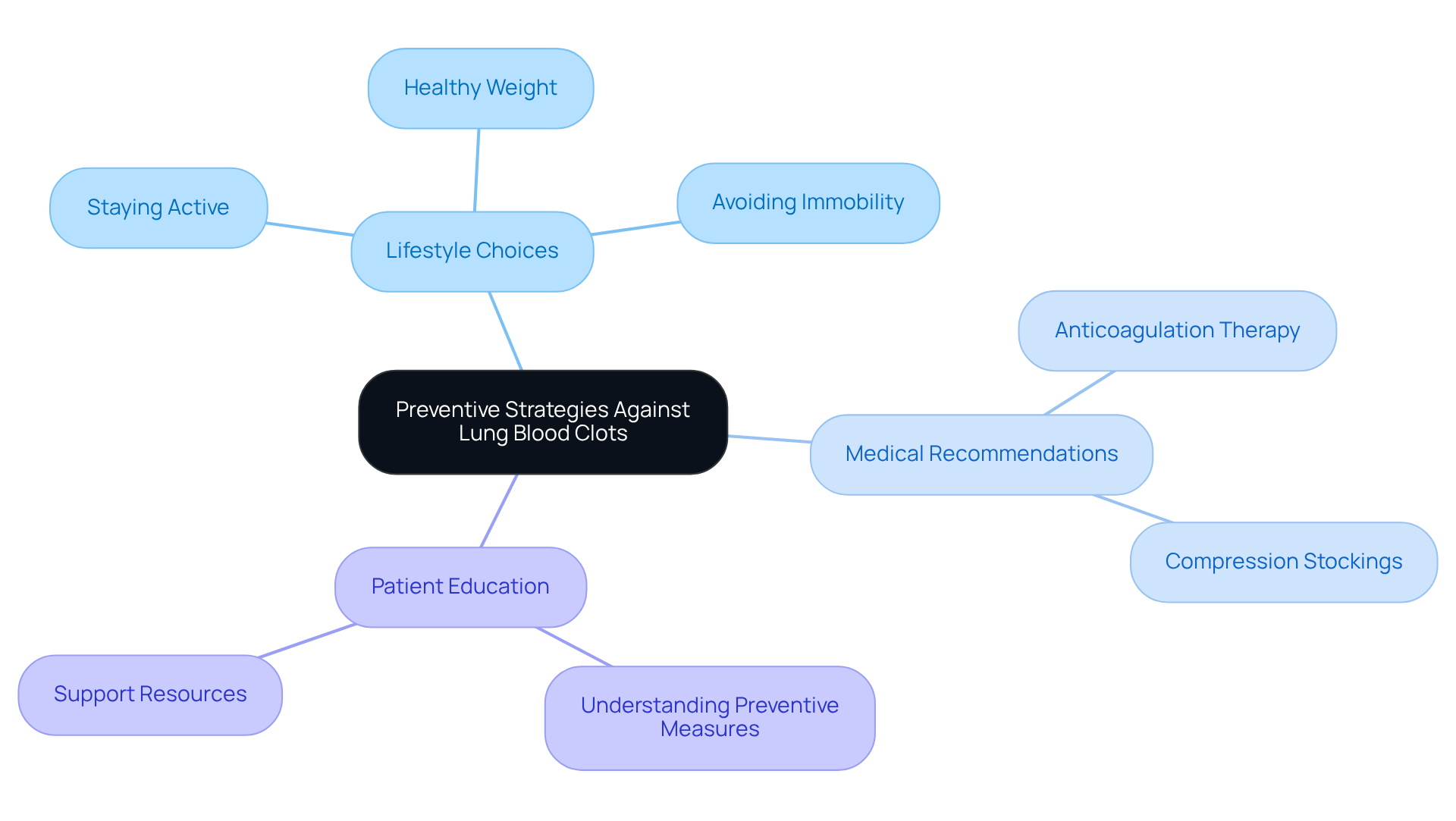
Understanding blood clots in the lungs is vital for protecting respiratory health and preventing serious complications, such as pulmonary embolism. By recognizing the formation, risk factors, symptoms, diagnostic methods, treatment options, and preventive strategies, you can take proactive steps in managing your health. This comprehensive guide underscores the importance of timely intervention and personalized care in addressing the challenges posed by blood clots.
Key insights reveal the critical role that lifestyle choices play in prevention, the necessity of recognizing symptoms early, and the effectiveness of various treatment modalities tailored to individual needs. Healthcare providers, such as those at Amavita Heart and Vascular Health, are dedicated to offering compassionate support and advanced care for those affected by this condition.
Ultimately, fostering awareness and understanding of blood clots in the lungs can lead to better health outcomes. We encourage you to stay informed, seek help when needed, and embrace preventive measures to reduce your risk. By taking these steps, you can not only enhance your own well-being but also contribute to a broader culture of health and safety within the community.
What are blood clots and how do they affect lung health?
Blood clots, or thrombi, are solid masses formed from platelets and fibrin in the circulation. In the lungs, they can lead to pulmonary embolism (PE), a serious condition where a blockage travels to the pulmonary arteries, impeding circulation and potentially reducing oxygen supply to the body.
Why are blood clots particularly concerning for older adults?
Older adults face unique complications related to coagulation in respiratory health due to age-related changes in heart health. These changes can increase the risk of blood clots and their associated complications, making timely intervention crucial for better outcomes.
What are common causes of blood clots in the lungs?
Common causes include prolonged immobility (such as during long flights or extended bed rest), certain medical conditions (like heart disease, cancer, or obesity), genetic predispositions to clotting disorders, and age, with seniors being at higher risk.
How can individuals at high risk for blood clots be assessed and managed?
High-risk individuals, especially the elderly, can benefit from advanced imaging capabilities and thorough assessments. Understanding risk factors allows for enhanced evaluation and personalized management strategies to address cardiovascular health effectively.
What should someone do if they have concerns about their respiratory or cardiovascular health?
It is important to reach out for support if you or a loved one have concerns about respiratory or cardiovascular health. Seeking help and understanding your health is vital for maintaining well-being, and compassionate care is available to guide you through the process.